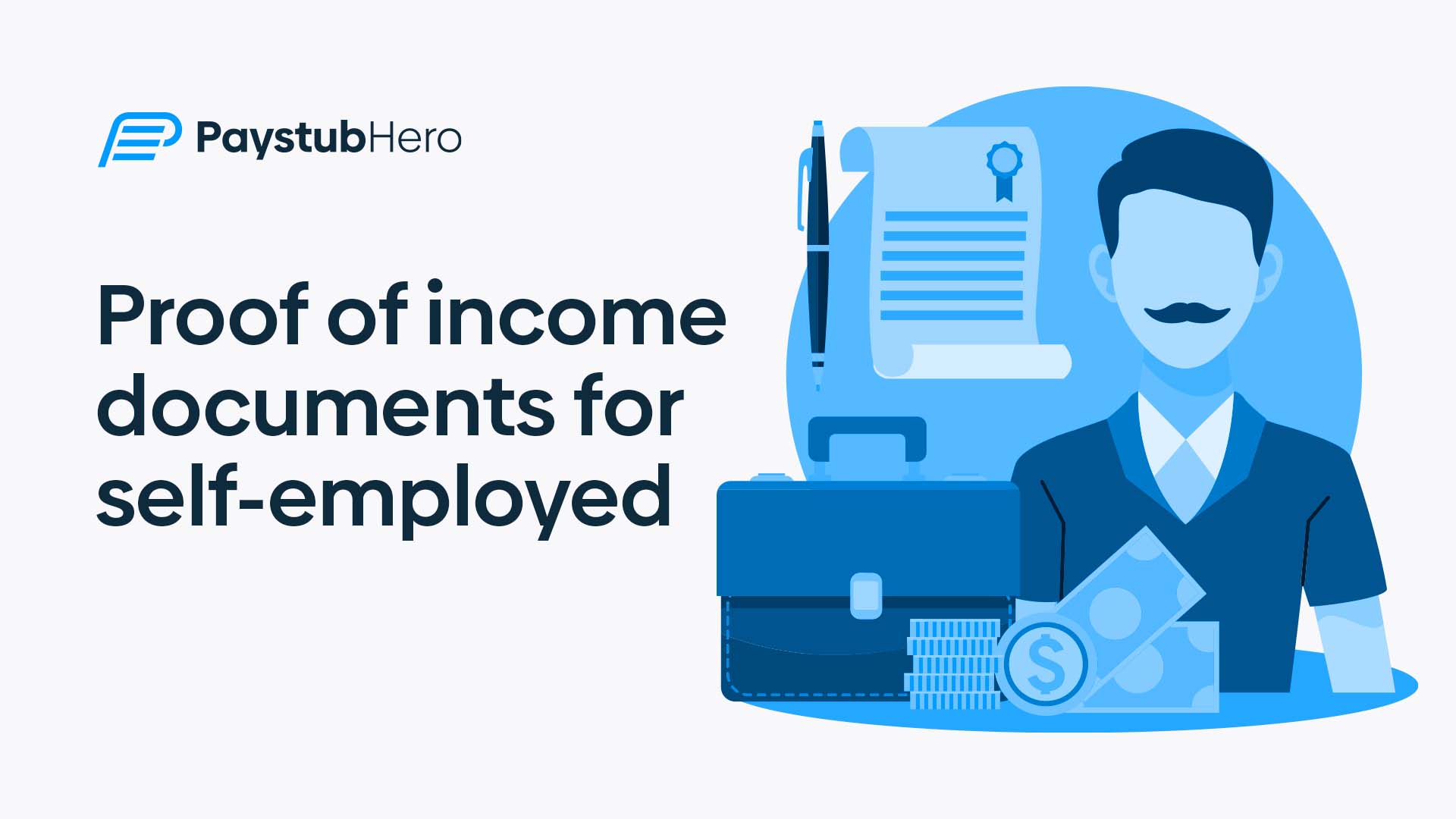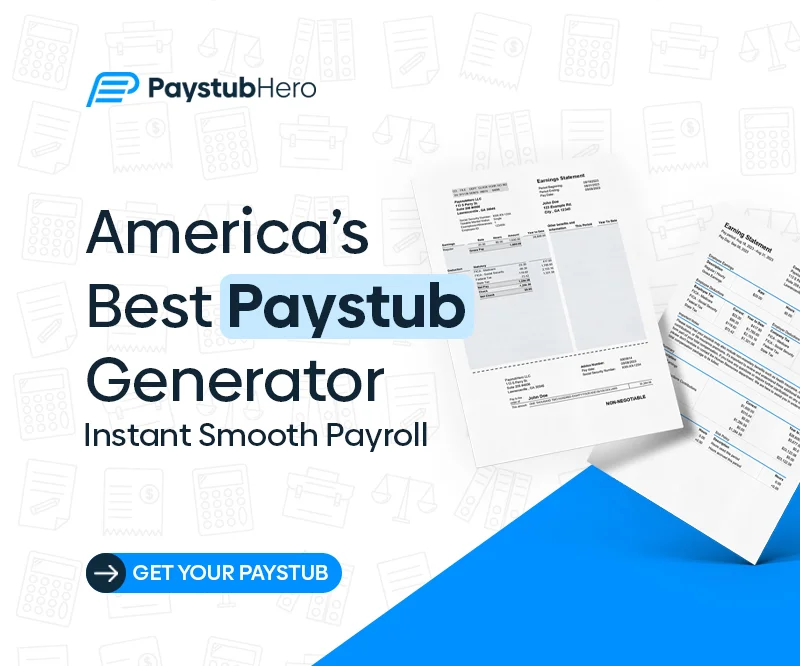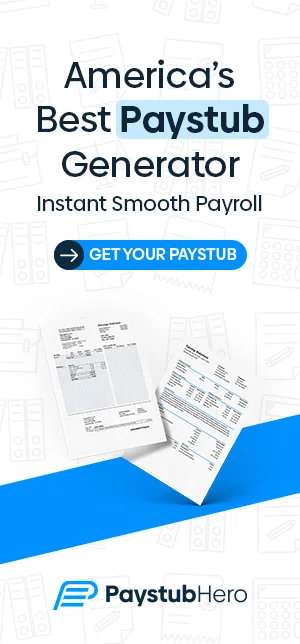The modern world has been witnessing a seismic shift towards entrepreneurship and self-employment. Traditional 9-to-5 jobs are giving way to flexible, self-directed work models. Freelancers, entrepreneurs, independent contractors, and small businesses are now key drivers of the economic engine, contributing significantly to growth and innovation.
However, with this newfound freedom comes the need for a different approach to managing financial affairs. One such challenge that self-employed individuals often face is providing proof of income, a prerequisite for various financial transactions and decisions.
In traditional employment scenarios, proving your income is typically as straightforward as presenting a pay stub or a proof of income letter from your employer. But when you’re self-employed, things become a bit more complex.
The standard documents may not apply or even exist in your context, requiring you to resort to other forms of documentation to confirm your income.
This article is designed to guide you through the different types of proof of income documents for self-employed individuals, highlighting their importance, functionality, and where you can obtain them.
Table of Contents:
- Introduction: Proof of Income Documents for Self-Employed
- Income Verification Documents: Your Financial Passport in a Self-Employed World
- Tax Returns: Your Financial Yearbook Unfolding Your Annual Earnings
- Bank Statements: Your Financial Photo Album Showcasing Income Flows
- Profit and Loss Statements: The Financial Health Report Card of Your Business
- The Emergence of Self-Employed Pay Stubs: The New-age Answer to Traditional Proof of Income
- The Role of PaystubHero in Income Verification: Simplifying the Path to Financial Proof
- CTA: Simplify Your Income Verification Journey with PaystubHero
Your income verification documents are your financial identity
In the absence of a regular paycheck from an employer, income verification for the self-employed can seem like a daunting task. Yet, it’s not as complicated as it appears.
The key lies in understanding the different forms of proof and when and how to use them. Various income verification documents can play this role, from annual tax returns and bank statements to profit and loss statements, and increasingly, self-employed pay stubs.
Whether you’re applying for a loan, renting an apartment, or negotiating a contract, these documents act as a financial identity card, revealing your earnings and affirming your economic stability.
Let’s delve into these documents and shed light on how they contribute to validating your self-employed income.
Income Verification Documents: Your Financial Passport in a Self-Employed World
In the realm of self-employment, validating your income isn’t as straightforward as it is for traditionally employed individuals. There’s no employer to issue a neatly packaged pay stub or an easily comprehensible income letter.
However, this doesn’t make the task impossible, just different.
Just like a passport affirms your identity in foreign lands, income verification documents serve a similar purpose in the financial world. They attest to your economic identity, showcasing your earning capabilities and financial stability.
Various forms of documentation can perform this vital role – from annual tax returns and bank statements to profit and loss statements, and importantly, self-employed pay stubs.
These documents collectively weave the narrative of your financial journey, attesting to your income history and stability.
Whether you’re standing in front of a loan officer, a potential landlord, or a business partner, these documents are your proof of financial credibility. They show that you have a consistent source of income, can meet financial obligations, and are a safe bet to engage with financially.
However, it’s essential to understand what each document represents and how best to use it to prove your income.
With this knowledge in hand, you’re equipped to navigate the diverse landscape of self-employment and confidently present your income verification documents as proof of your financial reliability and success.
Tax Returns: Your Financial Yearbook Unfolding Your Annual Earnings
In the complex landscape of income verification for self-employed individuals, tax returns hold a position of undeniable prominence.
Much like a yearbook that captures the essence of a year gone by, tax returns provide a comprehensive snapshot of your earnings over a fiscal year. They unfold your financial narrative, underscoring your monetary gains, business expenditures, and ultimately, your net income.
For the self-employed, this includes the IRS Form 1040 and Schedule C. The Form 1040 is the standard tax form used by individuals in the U.S., while Schedule C details profit or loss from your business.
These tax documents not only provide insight into your income but also highlight your deductions, taxable income, and the amount of tax paid or due.
Tax returns provide an annual perspective on your income, setting them apart from other forms of proof that might only offer a monthly or quarterly viewpoint.
This extensive overview can be particularly useful when dealing with institutions like banks or lenders that are interested in your long-term financial stability rather than just a momentary snapshot.
However, as comprehensive as they are, tax returns are typically retrospective and might not account for recent changes in income. Therefore, while they are an integral part of your income verification toolbox, they’re often best presented in conjunction with other proof of income documents for a complete picture of your financial health.
Bank Statements: Your Financial Photo Album Showcasing Income Flows
In the grand narrative of your financial journey as a self-employed individual, bank statements act as your personal financial photo album. Just as a photo captures a specific moment, your bank statement provides a snapshot of your financial status at a particular time.
These documents are akin to freeze-frames, highlighting your income flows and expenditures, giving a clear picture of your financial health.
A bank statement typically showcases your business’s incoming deposits and outgoing withdrawals. It’s a document that tells a story of your financial activity – every payment received, every purchase made, every fee incurred.
For those who run their own businesses, bank statements serve as evidence of financial transactions, demonstrating your ability to generate consistent income and maintain positive cash flow.
This kind of proof of income can be particularly useful when your business has regular income streams, as it visually depicts a timeline of steady earnings.
Lenders, landlords, and other parties requiring proof of income often appreciate the regularity and consistency that bank statements can display. They provide proof that you have a stable income and can fulfill your financial commitments.
However, it’s worth noting that while bank statements can show regular income, they don’t differentiate between business and personal transactions unless you have separate accounts for each.
As a result, they are often used in conjunction with other forms of income verification to provide a fuller picture of your business income and personal spending habits. This multi-document approach can offer a more detailed, reliable portrayal of your financial standing as a self-employed professional.
Profit and Loss Statements: The Financial Health Report Card of Your Business
Just as a balance sheet provides an overview of a company’s financial standing, a profit and loss statement, or an income statement, offers a critical evaluation of a business’s performance over a specific period. Think of it as the report card of your business – assessing your financial proficiency, marking the credits and debits, and ultimately grading your business’s profitability.
For entrepreneurs running their own businesses, this statement is an essential tool that delivers a detailed analysis of your business revenues, costs, and expenses. It helps you track your financial progress, pinpoint cost-heavy areas, and strategize future business moves.
More importantly, it provides a transparent look into your net income – a crucial figure that potential lenders or partners are interested in.
The profit and loss statement serves as proof of your business’s profitability. It shows whether your business is making money, losing money, or merely breaking even. The details presented in the statement offer a clear indication of your income generation capabilities, underlining your financial sustainability.
However, it’s essential to keep in mind that the profit and loss statement is primarily a business document. While it does present a comprehensive view of your business’s financial health, it may not necessarily reflect your personal income, especially if you reinvest a significant part of the profits back into the business.
Therefore, like other proof of income documents, it’s often most effective when used alongside other forms of income verification to provide a well-rounded view of your financial situation as a self-employed individual.
The Emergence of Self-Employed Pay Stubs: The New-age Answer to Traditional Proof of Income
In the evolving ecosystem of self-employment, new forms of income verification have begun to surface, aimed at simplifying and streamlining the process. One such emerging solution is the use of self-employed pay stubs.
If you think of the traditional forms of proof of income as lengthy novels, then self-employed pay stubs are the cliff notes – they present a clear, concise summary of your earnings, making it easier for others to understand your income at a glance.
In the past, pay stubs were primarily associated with traditional employment scenarios, where employers provided them as part of the payroll process.
But with the surge in self-employment, this document is evolving to fit the new reality. A self-employed pay stub provides a succinct, easy-to-understand breakdown of your income, effectively serving as a quick-reference guide to your earnings.
This document mirrors a traditional employee pay stub, detailing your gross income, deductions, and net income for a specific period.
Unlike tax returns, which provide a yearly overview, or bank statements that can fluctuate based on business expenses, self-employed pay stubs reflect a consistent income figure. This makes them an excellent tool for showcasing your income stability.
Furthermore, self-employed pay stubs are gaining traction because they offer a solution to a common challenge that self-employed individuals often face – the ability to quickly and accurately present proof of income.
They’re straightforward, easy to produce, and widely accepted, making them an efficient option for self-employed individuals navigating the financial landscape.
The Role of PaystubHero in Income Verification: Simplifying the Path to Financial Proof
Navigating the labyrinth of income verification as a self-employed individual can seem overwhelming. This is where PaystubHero swoops in, functioning as the superhero in your financial narrative.
The role of PaystubHero in income verification is pivotal, offering an easy-to-use, efficient, and affordable solution designed specifically for freelancers, entrepreneurs, small businesses, and independent contractors.
As a leading online payroll software, PaystubHero provides an alternative to higher-priced and large-business-oriented solutions like ADP or Gusto. It offers a more accessible and simplified approach that levels the playing field for those who typically don’t have access to traditional payroll systems.
PaystubHero embraces the reality of self-employment, recognizing the need for a user-friendly platform that makes generating proof of income as straightforward as 1-2-3.
PaystubHero empowers you to create self-employed pay stubs quickly and efficiently. With just a few clicks, you can enter your company and employee information, and the software handles the calculations for you.
These pay stubs serve as a solid proof of income, acceptable to lenders, landlords, and other parties interested in verifying your income.
By enabling you to produce pay stubs swiftly and effortlessly, PaystubHero puts you in control of your financial story. You’re no longer solely reliant on tax returns, bank statements, or profit and loss statements.
Instead, you can provide a direct, easy-to-understand document that proves your income reliably and efficiently.
By embracing the innovative solution offered by PaystubHero, you’re not just getting a tool for income verification – you’re getting a partner dedicated to making your journey through self-employment smoother and more secure.
Simplify Your Income Verification Journey with PaystubHero
Embarking on the journey of self-employment is an exciting venture. Yet, amidst this excitement, the intricacies of income verification can often seem like a daunting maze. That’s where PaystubHero steps in, illuminating your path and simplifying your journey.
PaystubHero is not just an online payroll software; it’s a superhero designed to streamline your financial management. We’re dedicated to making the process of income verification hassle-free, quick, and reliable.
Our platform allows you to generate self-employed pay stubs with ease, offering a robust solution to your proof of income needs.
So why struggle through the complexities of traditional income verification documents when you have a friendly superhero waiting to help?
With PaystubHero, you can confidently present proof of your income to any party, anytime, anywhere.
Take the stress out of income verification. Whether you’re an entrepreneur, freelancer, small business owner, or an independent contractor, PaystubHero is the partner you need in your financial journey.
So why wait? It’s time to embrace simplicity and efficiency in managing your financial documents. Make the smart move, join the PaystubHero family today, and take control of your financial narrative.
Frequent Asked Questions
What can be used as proof of income for self-employed?
Self-employed individuals can use tax returns, bank statements, profit and loss statements, and self-employed pay stubs as proof of income. Each of these documents showcases a unique perspective on the individual’s earnings.
What is a proof of income document example?
- An example of a proof of income document is a self-employed pay stub. This document summarizes your earnings for a specific period, similar to a traditional employee pay stub.
What are the two main documents often needed to show your income for the year?
Two main documents often needed to show your income for the year are tax returns (specifically IRS Form 1040 and Schedule C for the self-employed) and annual profit and loss statements. These provide a detailed overview of your yearly earnings.
What document must you submit to the IRS when reporting self-employment income?
When reporting self-employment income, you must submit IRS Form 1040 and Schedule C. Schedule C outlines the profit or loss from your business, while Form 1040 is the standard individual tax return form.





